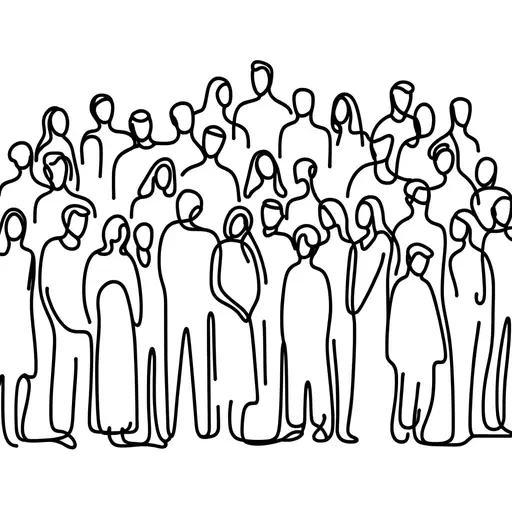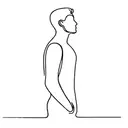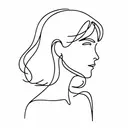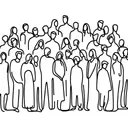
How to draw ...
people
people is the 16th most searched thing that people want to draw and here is how it compares to other things in People > Humans.
But do people always want to draw people?
Interest over time on "how to draw people" in the U.S.
Cycle
The data shows a consistent increase in search volume during the months of September through March each year, likely due to the return of school and work after summer holidays, leading to greater online engagement and information-seeking activities.
And how does it compare to the most popular things to draw among Humans?
Interest over time on "how to draw people" comparing to top 3 in Humans category
data from Ahrefs Keyword ExplorerWhich countries are most interested in drawing people?
| United States | 🇺🇸 | 904,000 | |
| France | 🇫🇷 | 203,000 | |
| Canada | 🇨🇦 | 145,000 | |
| India | 🇮🇳 | 82,000 | |
| United Kingdom | 🇬🇧 | 57,000 |
How to draw people step-by-step
Drawing people presents challenges such as capturing accurate proportions, conveying realistic movement, and depicting diverse facial features. Artists often struggle with the intricate details of human anatomy and the dynamic nature of poses. Key strategies include studying anatomy, practicing gesture drawing to enhance fluidity, and focusing on facial symmetry and expressions. Regular sketching and observing from life help artists improve their skills in portraying the complexity of human forms.
Here are the steps to drawing people:
- Begin with Basic Shapes: Start by sketching simple shapes like circles for the head, ovals or rectangles for the torso, and lines for the limbs to create the basic framework of your figure. These fundamental shapes help in maintaining proportions and structure.
- Define the Proportions: Establish the body's proportions by dividing the figure into sections. The average human figure is about seven to eight heads tall. Mark these divisions lightly to guide the placement of key features like the shoulders, hips, and knees.
- Outline the Body Structure: Connect the basic shapes with lines and refine them into more anatomical forms. Create the neck by connecting the head to the torso. Sketch the arms and legs with cylinders or elongated ovals, ensuring to show joints at the elbows and knees.
- Shape the Head and Face: Develop the head by adding a jawline to transform the circle into a more realistic skull shape. Divide the face into horizontal guidelines to position the eyes, nose, and mouth accurately. The eyes should be halfway down the head, the nose one-third down from the eyes, and the mouth one-third down from the nose.
- Refine the Limbs and Hands: Flesh out the arms and legs, paying attention to muscle shapes and joint definition. Sketch the hands by breaking them down into basic shapes: a box for the palm and cylinders for the fingers. Be mindful of natural hand poses and finger lengths.
- Add Clothing and Details: Once the body is shaped, overlay clothing and accessories. Consider the fabric's folds and how clothing fits over the figure's anatomy. Add details such as hair, facial features, and unique characteristics that personalize the individual.
- Incorporate Shading and Texture: Enhance the drawing by adding shading to give depth and dimension. Determine the light source, then shade areas that would be in shadow. Add texture to the skin, clothing, and hair to create a more lifelike appearance.
- Final Touches: Review your drawing for any adjustments needed in proportions or details. Darken the main outlines to make them stand out, and erase any unnecessary guidelines. Add any final details or highlights to emphasize certain aspects of your drawing.
Common mistakes
- Proportions: Beginners often struggle with getting the proportions of the human body right, leading to figures that look unnatural or distorted.
- Anatomy: A lack of understanding of human anatomy can result in drawings where muscles, joints, and other features are misplaced or misshapen.
- Perspective: People commonly make errors with perspective, either flattening the figure or failing to convey depth and three-dimensionality in their drawings.


